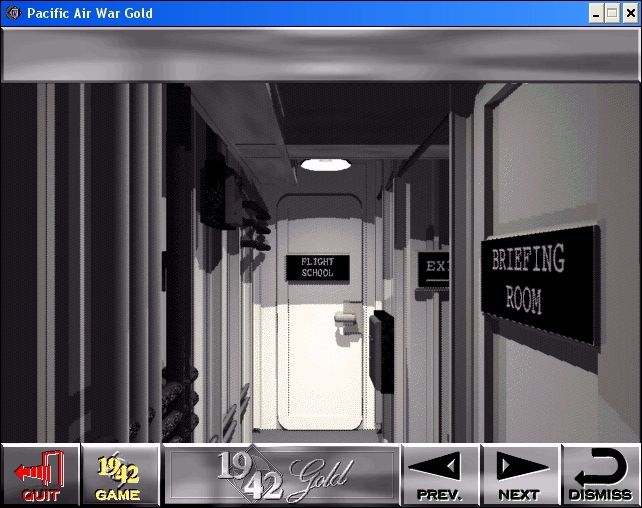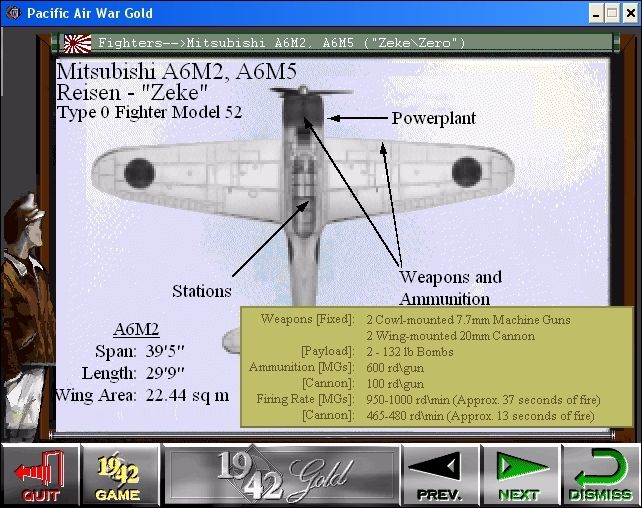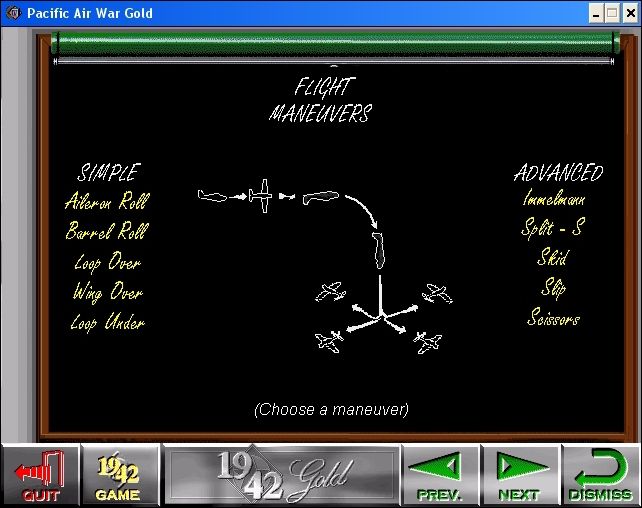Retro Replay Review
Gameplay
1942: The Pacific Air War Gold delivers a deep and immersive flight simulation experience that challenges both novice and veteran sim pilots. The core campaign spans the entire Pacific Theater of World War II, offering an impressive range of missions—from carrier strikes against enemy fleets to high-altitude intercepts over hostile islands. Players can choose to fly dozens of authentic aircraft, each modeled with its own flight characteristics, armament configurations, and cockpit layouts.
(HEY YOU!! We hope you enjoy! We try not to run ads. So basically, this is a very expensive hobby running this site. Please consider joining us for updates, forums, and more. Network w/ us to make some cash or friends while retro gaming, and you can win some free retro games for posting. Okay, carry on 👍)
The included expansion, 1942: The Pacific Air War Scenario, adds even more depth by introducing alternative historical scenarios and “what-if” engagements. These scenarios enhance replayability and allow you to test your tactical skills under varied conditions, such as launching surprise dawn raids or defending key islands against reinforced Japanese air wings. The mission editor is robust, enabling players to tweak parameters, set custom waypoints, and create entirely new operations.
One of the most satisfying aspects of the gameplay is the balance between strategic planning and visceral aerial combat. Before each mission, you plot waypoints, assign squadrons, and determine fuel and weapon loads. Once airborne, you fly in real time, manage engine power, monitor damage systems, and engage in dogfights with AI-driven opponents that employ realistic tactics. The seamless transition from high-altitude navigation to low-level strafing runs keeps the action varied and engaging.
However, the steep learning curve may intimidate some players. The manual is voluminous, covering flight dynamics, instrument readings, and carrier operations in excruciating detail. While this depth is a boon for simulation purists, casual flyers might find the intricacies of carrier takeoffs, precise flaps management, and bomb sight calculations overwhelming. Thankfully, the game’s comprehensive flight instructions and identification guides (included in some editions) help bridge the gap.
Graphics
For a DOS-era title, 1942: The Pacific Air War Gold showcases remarkably detailed terrain and aircraft models. Island airstrips, dense cloud layers, and ocean wave patterns are rendered with clarity, aiding navigational awareness during long flights. The cockpit views are particularly noteworthy, featuring switchable panels and accurate instrumentation that contribute to the simulation’s authenticity.
That said, the graphical presentation does show its age by modern standards. Textures are low-resolution, aircraft textures can appear flat at close range, and the horizon line sometimes exhibits noticeable pop-in. Weather effects, such as dynamic clouds and haze, are functional but lack the volumetric realism seen in contemporary simulators. Nonetheless, these limitations are offset by a clean interface and an unobtrusive HUD, which keeps your focus on flying rather than distracting visual clutter.
The expansion pack introduces a few additional cockpit liveries and custom paint schemes, which freshen up the visual variety in multiplayer or custom scenarios. While there’s no support for hardware-accelerated 3D, the game’s software-rendered graphics engine remains stable and delivers a smooth frame rate on the recommended hardware. For modern users, running under DOSBox on a current PC will provide an experience very close to the original, albeit without widescreen support or anti-aliasing.
Some editions of Gold come with Windows 3.x multimedia slideshows and image galleries that showcase aircraft identification charts and mission briefings in higher resolution. These extras, while nostalgic, require a legacy Windows environment to run properly, making them a nice bonus for enthusiasts willing to set up vintage virtual machines.
Story
While 1942: The Pacific Air War Gold is primarily a simulation, it weaves its historical narrative through meticulously researched briefings and after-action debriefs. Each mission is accompanied by period-accurate text, maps, and photographs that place you in the context of pivotal battles such as Midway, Guadalcanal, and the Battle of the Philippine Sea. This approach adds weight to every sortie, reminding you that each victory or loss contributed to the larger ebb and flow of the Pacific campaign.
The expansion’s alternative scenarios allow you to explore “what-if” narratives—pondering outcomes like a failed Doolittle Raid or an extended defense of Wake Island. These hypothetical storylines are grounded in real-world military doctrine, and the game’s mission briefings adapt accordingly, offering an engaging twist on historical events. Although there are no voiced cutscenes or character arcs, the strategic stakes and evolving frontline situations provide plenty of dramatic tension.
The lack of true character-driven storytelling means you won’t find personal narratives or pilot camaraderie beyond the briefing room. Instead, the game places its narrative weight on operational realism and the ever-changing objectives of a dynamic war theater. For history buffs, this method of storytelling may feel more authentic than scripted dialogue, though it could leave players accustomed to modern narrative-driven flight games wanting more human elements.
Overall, the story framework succeeds in contextualizing your actions without overshadowing the gameplay. Whether you’re executing a bombing run on a Japanese carrier or escorting bombers over dense jungle terrain, the historical backdrop keeps each mission meaningful and provides enough variety to sustain interest over multiple playthroughs.
Overall Experience
1942: The Pacific Air War Gold is a landmark title in the flight simulation genre, offering an unmatched blend of strategic planning and hands-on flying. Its comprehensive coverage of the Pacific Theater, bolstered by the Scenario expansion, ensures dozens of hours of engaging gameplay. Multiplayer support via IPX or direct modem connections, while archaic by today’s standards, adds another layer of challenge for those seeking dogfights against human adversaries.
Installation and setup can be a hurdle for modern users. The original DOS environment, coupled with optional Windows 3.x multimedia extras, requires a dedicated retro-computing setup or a well-configured DOSBox instance. However, once up and running, the game is stable and free of the performance hiccups that plague many emulated titles. For enthusiasts, the authenticity of the original experience far outweighs these technical inconveniences.
From the detailed manual and aircraft recognition guides to the intricate mission editor, Gold is tailored for players who appreciate depth over flashiness. It lacks the immediate accessibility of arcade-style flight games but compensates with realism, historical fidelity, and immense replay value. Whether you’re drawn by carrier-based tactics or large-scale naval engagements, this compilation remains one of the most comprehensive WWII air war simulations available.
In summary, 1942: The Pacific Air War Gold is a must-have for serious flight sim enthusiasts and history aficionados. Its immersive gameplay, richly detailed campaign, and sprawling scenario editor deliver an experience that stands the test of time. While modern conveniences like widescreen support and streamlined interfaces are absent, the game’s core strengths—authenticity, depth, and historical scope—ensure it remains a compelling purchase for those who relish a true simulation challenge.
 Retro Replay Retro Replay gaming reviews, news, emulation, geek stuff and more!
Retro Replay Retro Replay gaming reviews, news, emulation, geek stuff and more!









Reviews
There are no reviews yet.